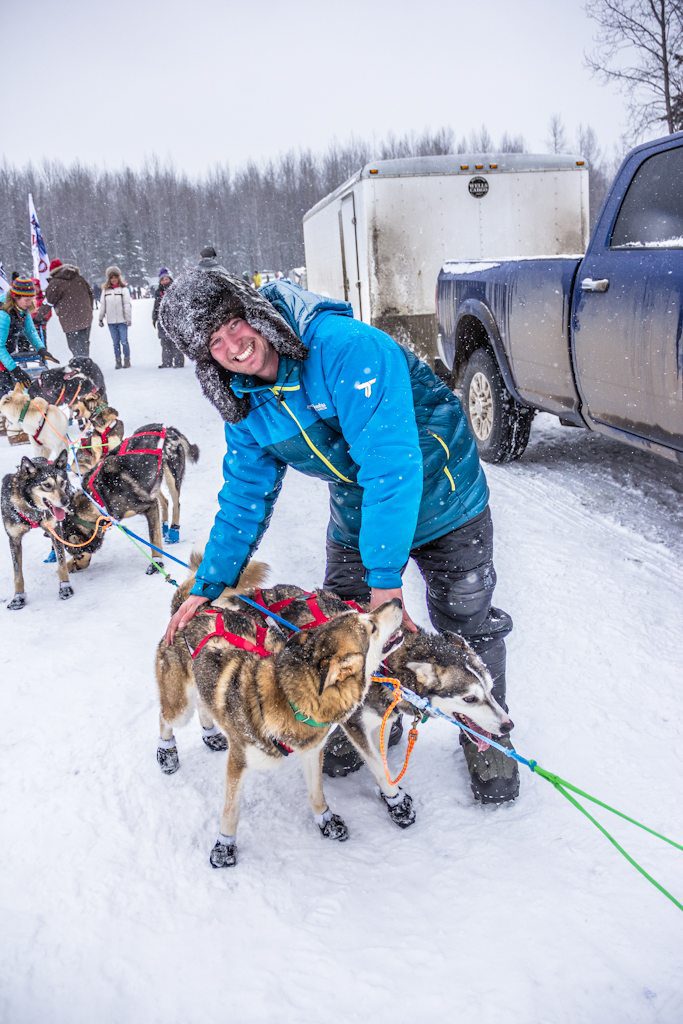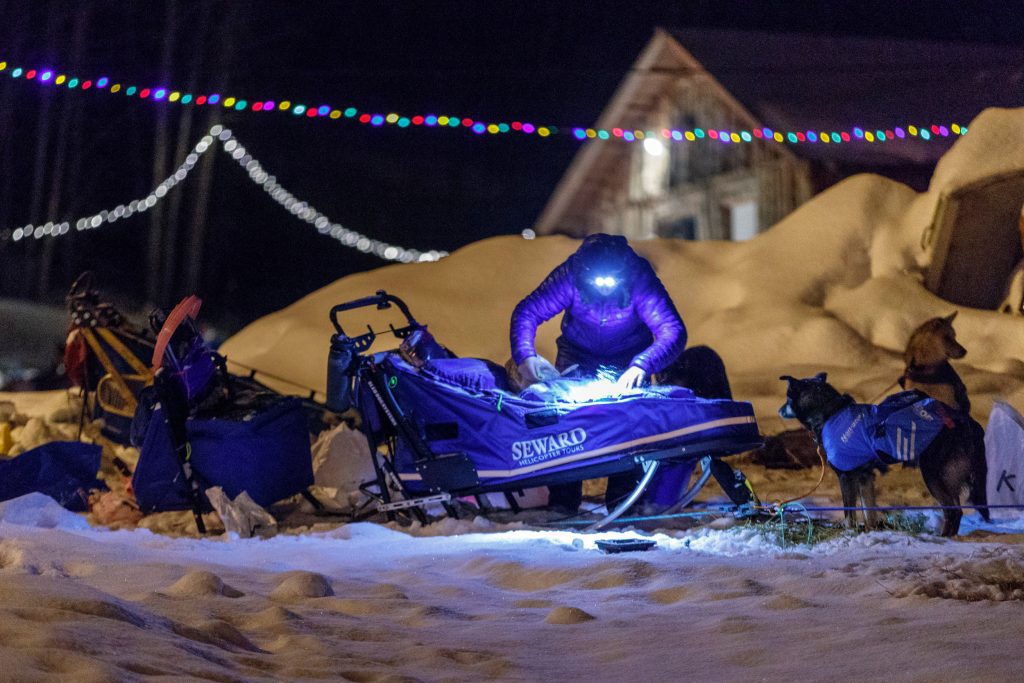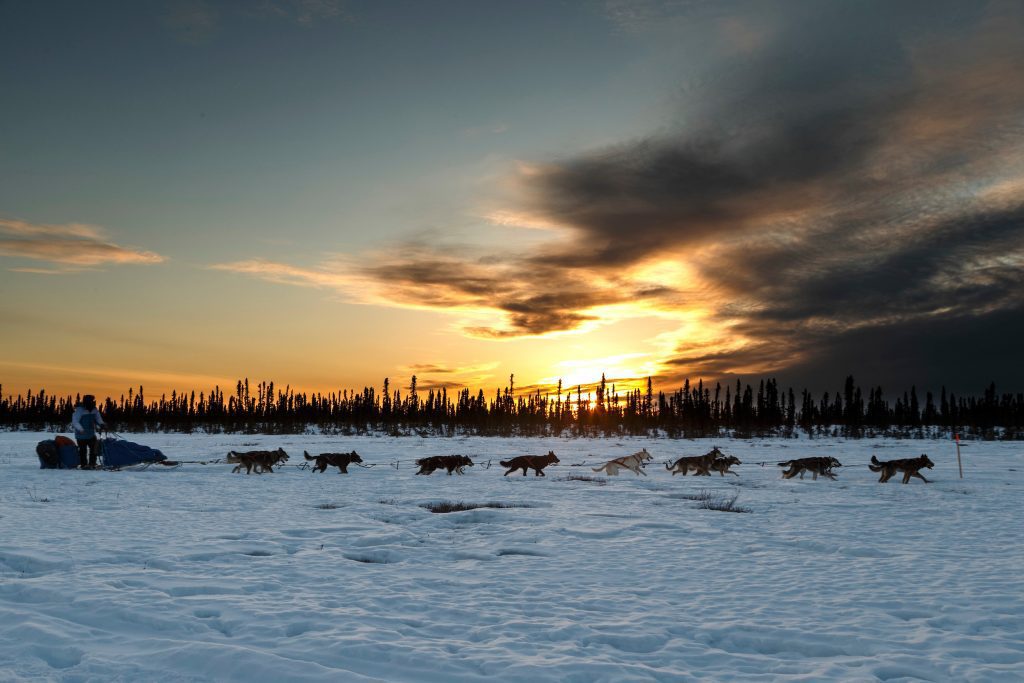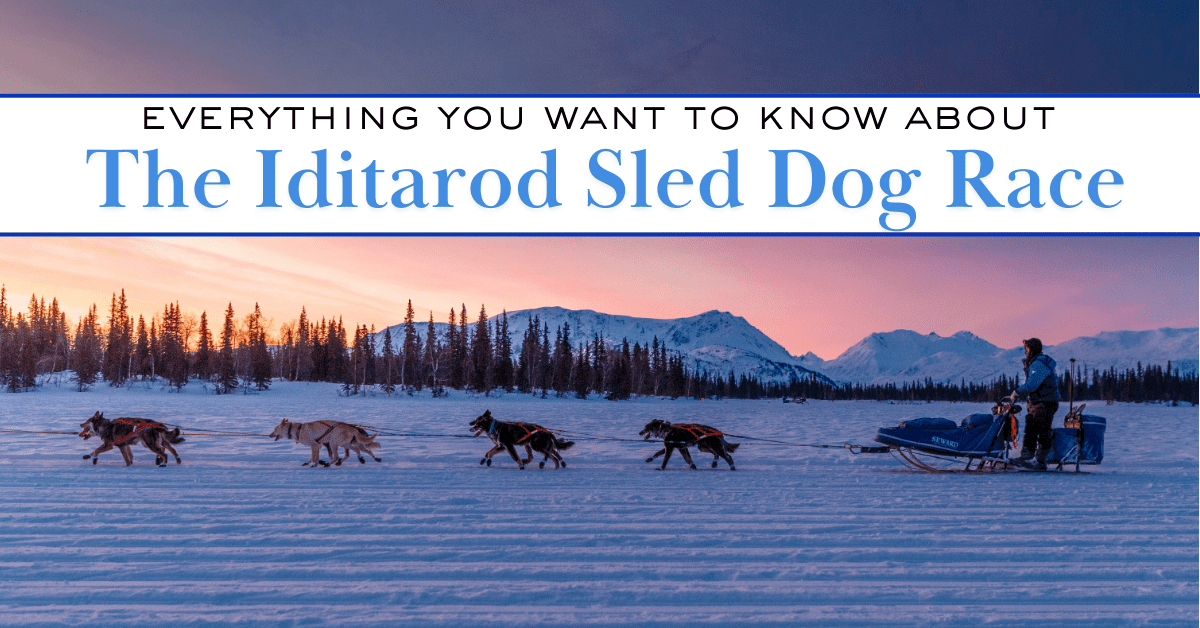What is the Iditarod Sled Dog Race?
The Iditarod Trail Sled Dog Race, often referred to simply as “The Iditarod,” is a legendary annual race that covers over 1,000 miles through the rugged wilderness of Alaska. Celebrated for its challenging terrain, unpredictable weather, and the bond between mushers and their teams, the Iditarod has become one of the most iconic events in the world of dog sledding. But what exactly is the Iditarod, and why does it capture the imagination of so many? Let’s dive into the history, significance, and thrilling adventure behind this celebrated race.
Iditarod Race Overview: Key Insights and Details
The Origins of the Iditarod: Preserving the Legacy of Sled Dogs
While the Iditarod is often linked to the famous 1925 Serum Run, this is a common myth that has been perpetuated over the years. The race was not created specifically to honor the Serum Run or the heroic sled dog teams that helped deliver the lifesaving diphtheria serum to Nome. Instead, the Iditarod Trail Sled Dog Race was founded as a way to preserve and celebrate the tradition of dog sledding in Alaska, at a time when these methods of transportation were being overtaken by modern technology like airplanes and snow machines.
In the early 20th century, dog sledding was an essential part of life in Alaska, particularly in remote regions where motorized vehicles couldn’t reach. However, with the advent of faster and more efficient methods of transportation, the role of sled dogs began to fade. By the 1960s and 1970s, there was a growing concern that this unique part of Alaskan culture and history might be lost.
To combat this, the Iditarod race was conceived in the early 1970s as a way to honor the sled dogs and the mushers who had kept the tradition alive for so many years. It was also a way to demonstrate the enduring strength and resilience of both the dogs and their handlers. The inaugural Iditarod race took place in 1973, and it quickly became an annual event that not only revived interest in dog sledding but also brought worldwide attention to the sport and its importance in Alaskan heritage.
The race’s founders, including the famous musher Joe Redington Sr., sought to create an event that would highlight the rugged endurance of the dogs, while also ensuring that future generations would recognize and value the critical role sled dogs played in Alaska’s history. Over time, the Iditarod has grown into a symbol of perseverance, teamwork, and adventure, reminding us of the bond between mushers and their dogs, and the harsh yet beautiful wilderness of Alaska.

Understanding an Iditarod Team: The Musher and Their Dogs
An Iditarod team is comprised of a musher and 16 sled dogs. Each dog plays a crucial role in the team’s performance, and together, they must work to navigate the challenging terrain and weather conditions over the course of the race.
The musher is the leader of the team, steering the sled, managing the dogs, and making key decisions about rest, pacing, and route choices. However, the real stars of the Iditarod are the dogs. These dogs, usually a breed known as the Alaskan Husky, are bred for endurance, speed, and strength. Each dog has a specific role depending on their size, experience, and personality—ranging from lead dogs, who set the pace and make turns, to wheel dogs, who help with the more physically demanding tasks of pulling the sled.
Iditarod Team Size Changes Throughout the Race
While a team can consist of up to 16 dogs, the number of dogs on the team can fluctuate as the race progresses. Mushers are allowed to send dogs home, but they cannot swap out dogs once the race has begun. This is an important part of the race and is centered around the well-being of the dogs. If a dog becomes injured, too tired, or is not performing at their best, the musher can choose to send the dog back to a checkpoint where they can be safely cared for.
Sending dogs home is a sign of responsible dog care and part of the musher’s commitment to ensuring the health and safety of their team. It is important to note that sending a dog home does not mean they have failed; it means that the musher is taking the necessary steps to ensure their well-being. Mushers are highly attuned to the well-being of their dogs, watching for any signs that might indicate the need for rest or care. They make thoughtful, responsible decisions to ensure their dogs’ comfort and safety throughout the race. This emphasis on responsible dog care is a core value of the Iditarod, and it demonstrates the deep bond between mushers and their dogs.
Ultimately, while the Iditarod is a race, the health and safety of the sled dogs is always the top priority. By practicing good dog care—whether through ensuring proper rest, providing adequate food, or making the decision to send a dog home when necessary—mushers continue to uphold the values of respect and responsibility for the dogs that make the race possible.
The Musher’s Responsibility: Care and Feeding of the Dog Team
One of the unique aspects of the Iditarod is that the musher is solely responsible for the care, feeding, and well-being of their dog team throughout the race. Unlike events such as NASCAR, where pit crews handle the maintenance and support of race cars, the musher is both the driver and the caretaker for their dogs. This responsibility extends to every aspect of the dogs’ needs, from feeding them high-energy meals at checkpoints to ensuring they stay hydrated and rested.
Mushers must be intimately familiar with each dog’s individual needs, recognizing when a dog may need extra rest, attention, or care. They must also be able to make decisions about feeding schedules, the appropriate amount of food for each dog, and even the timing of breaks based on how the dogs are performing. The race is physically demanding for both the mushers and their dogs, and the musher’s ability to manage these elements plays a pivotal role in the success of the team.
The responsibility of caring for the team without the aid of a support crew emphasizes the deep bond between musher and dogs. This level of care ensures that the dogs remain in top condition for the rigors of the race, as the musher constantly assesses the health of the team and provides the necessary resources for them to continue forward. In a race as grueling as the Iditarod, where conditions can be unpredictable and challenging, this constant, hands-on care is vital to the success of the team.
When Does the Iditarod Sled Dog Race Take Place?
When Does the Iditarod Sled Dog Race Take Place?
The Iditarod Trail Sled Dog Race is an annual event that typically takes place in early March, with the official start occurring on the first Saturday of the month. The exact dates can vary slightly from year to year, but this timing is chosen to ensure that the race occurs during Alaska’s winter season, when the conditions are most conducive for dog sledding.
How Long Is The Iditarod Sled Dog Race Take Place?
The Iditarod Trail Sled Dog Race is approximately 1,000 miles long. It stretches across Alaska, from the starting point in Willow to the finish line in Nome. The exact distance can vary slightly depending on the route chosen each year, but it typically spans over 1,000 miles of challenging terrain.
Besides its starting point, the Iditarod is run completely off the road system, meaning the only way to access the race route is by air, dog sled, or snowmobile. The remote and isolated nature of the race adds to its difficulty, as mushers and their dog teams must navigate through unspoiled wilderness with only the minimal infrastructure of remote native villages to rely on. This makes the Iditarod not just a race of speed and endurance, but also a test of survival in some of the most challenging and untouched terrain in the world.
How Long Does the Iditarod Take?
The duration of the Iditarod depends on the weather conditions, the team’s ability, and the strategy employed by the musher. On average, the race lasts anywhere from 8 to 15 days. Teams must navigate over 1,000 miles of challenging terrain, so mushers must pace themselves and their dogs, with strategic rest periods at checkpoints along the way.
The Official vs. Ceremonial Start
The Iditarod Trail Sled Dog Race kicks off with two distinct starts: the ceremonial start and the official start. While both are essential parts of the race, they serve different purposes and are celebrated in unique ways.
The Ceremonial Start: A Celebration of Alaska’s Heritage
The ceremonial start takes place in Anchorage, typically on the first Saturday of March. This event is a public celebration and an opportunity for the local community and fans from around the world to gather and witness the excitement of the race beginning. The ceremonial start is more of a festive parade than a competitive race.
During this start, each musher and their dog team line up in downtown Anchorage, where they are introduced to the crowd before making their way through the streets of the city. The dogs get a chance to stretch their legs and get used to the sights and sounds of the event, while spectators cheer on the teams. This event is not timed and does not count toward the official race clock. Instead, it serves as a way to showcase the sport of dog sledding, honor the history of the Iditarod, and generate excitement for the true race ahead.
While the ceremonial start offers a fantastic chance to see the teams up close, it is not a reflection of the grueling race conditions that will follow. Teams will usually travel a short distance, around 11 miles, before returning to Anchorage.
Today, race fans can bid to ride with a musher and their team as part of the “Iditarider” auction which is used as a fundraiser to help support the race.
The Iditarod Official Start in Willow
The official start takes place the following day in Willow, Alaska, located about 70 miles north of Anchorage. This is where the race truly begins.
The official start is when the clock starts ticking. Teams leave the starting line in 2-minute intervals. From this point on, the race is a serious test of endurance, with mushers navigating the challenging terrain, managing their dogs’ care, and working their way through checkpoints to reach the finish line in Nome.
Iditarod Race Routes
The Terrain: Navigating Alaska’s Rugged Wilderness
One of the defining features of the Iditarod Trail Sled Dog Race is the incredible variety of terrain it traverses as it winds its way across Alaska. From start to finish, the race covers over 1,000 miles of diverse landscapes, each presenting unique challenges that test both the dogs and the mushers.
The route begins in Willow, Alaska, and stretches all the way to Nome, passing through some of the most remote and rugged areas of the state. Mushers must navigate through forests, cross frozen rivers, and traverse the arctic tundra, all while contending with the harsh Alaskan climate. The race crosses both the Alaska Range and the Kuskokwim Mountains, with the mushers and their teams scaling steep climbs and navigating treacherous descents, sometimes in blizzard-like conditions. The Alaska Range, in particular, is a formidable challenge, as it stretches across the central part of the state and offers one of the toughest parts of the entire race.
In addition to mountains, mushers encounter vast stretches of arctic tundra, where the flat, open landscape makes for a grueling test of endurance. This is coupled with the challenge of navigating frozen rivers, which, while offering a relatively smooth path, can be unpredictable and difficult to cross. In the later stages of the race, mushers also navigate over sea ice along the Bering Sea coast, where the ice can shift and conditions change rapidly. This adds an extra layer of difficulty as the dogs and mushers need to be especially cautious of the terrain beneath their sleds.
The race also highlights the remoteness of Alaska’s wilderness. Unlike many other sporting events that are easily accessible by roads or highways, the Iditarod takes place in an area that is completely cut off from roads or infrastructure. There are no paved highways to follow—just the trail itself, marked with stakes and signage. The checkpoints, where mushers can rest and resupply, are often located in small, isolated communities, and the lack of direct access to these areas makes the race even more challenging. If something goes wrong, help can be hours or even days away.
This remoteness not only makes the race incredibly physically demanding but also serves as a testament to the perseverance and resilience of both mushers and their dog teams. The Iditarod is as much about navigating this rugged and often hostile environment as it is about speed and skill, with the terrain itself playing a central role in shaping the adventure of the race. It’s an event that pushes participants to their limits, while also allowing them to experience the wild, untamed beauty of Alaska in its purest form.
The Iditarod Alternates Between a Northern and Southern Route
The Iditarod Trail Sled Dog Race traditionally alternates between two primary routes: the Northern Route and the Southern Route. This alternation occurs annually, with the Southern Route utilized in odd-numbered years and the Northern Route in even-numbered years. Both routes share the initial segment from Willow to Ophir, covering approximately 352 miles. At Ophir, they diverge:
- Southern Route (Odd-Numbered Years): After Ophir, this route passes through the ghost town of Iditarod, followed by checkpoints in Shageluk, Anvik, Grayling, and Eagle Island before reuniting with the Northern Route at Kaltag.
- Northern Route (Even-Numbered Years): Post-Ophir, this path leads through Cripple, Ruby, Galena, and Nulato, also converging with the Southern Route at Kaltag.
This alternating route system helps allows different communities to participate in the race each year without putting too much strain on these small interior villages.
Iditarod Adapting to Environmental Challenges
In recent years, environmental factors have necessitated creative adjustments to the race route:
- 2021 Gold Loop Trail: Due to the COVID-19 pandemic, the traditional route was modified to the Gold Loop Trail.This loop began near Willow, extended to the Iditarod checkpoint, and included a turnaround at the ghost town of Flat before returning to Willow. This adjustment minimized interaction with communities and adhered to health guidelines.
- 2025 Fairbanks Start: A lack of snow in the Anchorage area led to the decision to start the 2025 race in Fairbanks. This change marked the fourth time the race has relocated to Fairbanks since 2004 due to insufficient snowpack. The altered route added over 100 miles, bringing the total distance to approximately 1,128 miles.
These adaptations underscore the race’s resilience and the organizers’ commitment to ensuring a safe and fair competition despite environmental challenges
Mandatory Rest in the Iditarod: A Key to Strategy and Dog Care
The Iditarod Trail Sled Dog Race is not just a test of speed, but also of strategy and endurance. While the race covers over 1,000 miles of rugged terrain, mushers must balance their desire to finish quickly with the need to take care of their dogs. To ensure the health and safety of the dog teams, there are mandatory rest periods built into the race, which serve as critical points for both the mushers and their dogs to recover and regroup.

24-Hour Layover
Every musher must take a mandatory 24-hour layover during the race. This layover can be taken at any checkpoint the musher chooses, giving them flexibility in how they approach the race. The 24-hour rest period is essential for the dogs, as it allows them to recover from the intense physical exertion of the race. It also provides the musher with an opportunity to assess their dogs’ health and ensure that their team is ready for the next leg of the journey.
Strategically, the timing of this layover can be critical. Some mushers might choose to take the 24-hour layover early in the race, allowing the dogs to rest before more challenging sections. Others might wait until later, after more miles have been covered, in order to rest the dogs before the final push toward Nome.
The decision of when to take this layover is a significant part of the race strategy and can make a big difference in how well a team performs overall. Typically, mushers take their 24-hour layover about 300-400 miles into the race with McGrath, Takotna, and Ophir being the most popular checkpoints for this rest.
8-Hour Layover at the Yukon River
In addition to the 24-hour layover, mushers must also take a mandatory 8-hour layover at a checkpoint along the Yukon River. This rest period is crucial as it allows the dog team to recover from the demanding conditions of the trail. The Yukon River section of the race is often one of the most challenging, with extreme cold and long stretches of open land, so the 8-hour rest ensures that the dogs can stay healthy and strong.
The checkpoint on the Yukon River is typically in a remote location, and mushers will often stay with their dogs, making sure they are properly fed, watered, and rested before continuing on. This layover provides both mushers and dogs the necessary time to regroup in the middle of the race, before heading into the final, most demanding leg toward Nome.
8-Hour Layover at White Mountain
The final mandatory rest is another 8-hour layover at White Mountain, located just a few hundred miles from the finish line. By the time mushers reach White Mountain, they’ve covered hundreds of miles of difficult terrain, and the dogs need this time to rest before the final stretch to Nome. White Mountain is considered the last major checkpoint, and it’s the final opportunity for both the dogs and mushers to recover before pushing forward to the finish line.
Mushers typically use this time to check in with their dogs’ condition, make sure everyone is well-fed and hydrated, and assess their team’s readiness for the home stretch. The time spent here is critical for ensuring that the dogs can finish strong, and it’s another moment for the musher to make strategic decisions on the best pacing for the final leg of the race.

Rest and Strategy
In the world of dog sled racing, particularly in the Iditarod, the way mushers manage their dogs’ rest and work cycles is a critical component of race strategy. Mushers face the difficult challenge of balancing speed with endurance, as the physical demands on their teams are immense. The core idea behind race strategy revolves around optimizing the dogs’ energy usage and ensuring they can maintain peak performance throughout the race, which stretches over 1,000 miles of rugged terrain.
One key difference in approach is whether a musher chooses to run long, steady runs at slower paces or shorter, faster runs between checkpoints. Teams that run at a slower pace over longer distances typically need less rest, as their dogs are working at a sustainable energy level that doesn’t require significant recovery time. These dogs, while traveling further each time, are using their energy more efficiently and are generally less fatigued at the end of the run.
On the other hand, teams that push their dogs at faster speeds over shorter distances tend to require more rest between runs. While they may cover less ground, the faster pace consumes more energy, leading to a greater need for recovery before continuing the race. This strategy may seem effective in getting a team to the next checkpoint more quickly, but it can lead to longer total rest times, potentially hindering the team’s performance in the long haul.
In the past decade, there has been a noticeable shift toward faster, shorter runs in an effort to gain an advantage in the race. Mushers are opting for speedier paces in a bid to cover more ground, even if it means taking more frequent or longer rests. This approach contrasts with the more traditional method championed by mushers like John Baker, who won the 2011 Iditarod with a slow and steady strategy. Baker’s record for the fastest time on the southern route still stands, showcasing that the steady pace and more consistent rest periods can be more effective over the course of the race, despite the shift toward faster-paced strategies.


